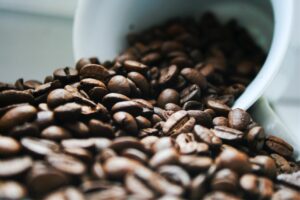COFFEE
September coffee rallied overnight to trade to new contract highs, just taking out the April high at 243.30.
Ongoing concerns about dry conditions in Vietnam and Brazil have supported the market. Vietnamese coffee exports in June totaled 70,202 metric tons, down 11.5% from May. Total exports for the first six months of the year have reached 893,820 tons, down 11.4% from last year, according to customs data. Reuters reported yesterday that the robusta harvest in Indonesia is slowly beginning to accelerate but that the Vietnam harvest remains slow and that supplies are likely to stay tight until the next harvest picks up in November. They also reported strong buying interest for late 2024/early 2025. Brazil’s harvest was 58% complete last week, which is above average. The harvest has been helped along by the dry conditions there, but those same dry conditions have raised concerns about smaller bean sizes. The main producing region of Minas Gerais is still dry, but there is not threat of frost either. Only 0.4 inch are expected in the next 12 days. ICE arabica stocks fell by 2,710 bags yesterday to 808,649. Stocks have fallen for three straight sessions and are the lowest hey have been since June 28. The net long is still historically large, which still leaves the market vulnerable to long liquidation selling if support levels are taken out. However, coffee has replaced cocoa as the object of funds’ attention.

COTTON
The Weekly Crop Progress report showed another decline in US crop conditions last week, but the market was apparently not too impressed, as December Cotton was near unchanged overnight and stayed close to the yesterday’s lows. The report showed 45% of the US cotton crop was rated good/excellent as of July 6, down from 50% the previous week and 56% two weeks ago. Conditions have slipped below year ago levels for the first time this season. Last year, conditions continued to decline through the summer due, falling all the way to 31% by early August. Texas was 35% good/excellent this week, down from 44% last week and close to last year’s 34%. Georgia was 55% G/E, up from 49% last week. Mississippi 53% G/E, down from 63% last week and 72% two weeks ago. Tennessee was 48% G/E, down from 62% last week. North Carolina increased slightly to 35% G/E after falling all the way from 86% on June 3 to 32% last week.
Decent rainfall in the Southeast last week contributed to the improvements in Georgia, and Hurricane Beryl may bring needed rain to the Delta. Some weather models are calling for increased chances of rain in the Delta this week, and increased chances in West Texas and the Delta out through July 20. The 6-10 day forecast calls for excessive heat in the southeastern US and eastern Delta and above average temps in Texas, with normal to above normal chances of rain. Above average temps persist in the 8-14-day, but that is accompanied by above normal chances of rain. The bearish acreage report in June pointed to ample US production this year, and it will be up to the weather to change that outlook. The rain will be needed to offset excessive hear. Heat + moisture = greenhouse.
SUGAR
Heavy rains are expected in some parts of Center-South Brazil over the next few days. This could interrupt harvesting but also ease concerns about the upcoming crop. Dry conditions have gotten Brazil’s 2024/25 production off to a strong start, but there has been this nagging concern that they will also bring an early end to the harvest. Brazil’s oil company Petrobas has announced a 7% price hike for gasoline. This could increase the profitability of producing ethanol in the country, thereby drawing cane processing away from sugar. Soil moisture in Thailand is climbing and is approaching normal levels, which should be good for their crop.
COCOA
Weather in West Africa has been decent lately, with no extreme rain or dry conditions. Reuters reported yesterday that rains were below average last week, but farmers said soils were moist enough to help the main crop grow. They don’t need an overabundance of moisture at this time, as that could trigger diseases and cause flowers and young fruits to fall from trees, which is what happened last year. Most areas are expected to see below normal rainfall this week. Ivory Coast port arrivals totaled 16,000 metric tons last week, down from 19,000 the previous week and 23,000 a year ago. Cumulative exports are running around 28% behind this time last year. The Commitments of Traders report showed managed money traders were net sellers of 732 contracts of cocoa for the week ending July 12, reducing their net long to 21,134. This is near the lower end of the range and illustrates the funds’ lack of participation in this market. European second quarter grind data is due on Thursday and North America and Asia on July 18. Europe’s first-quarter grind was down 2.2% from the same period in 2023, but North America’s was up 3.6%, and Asia’s was down only 0.2%.
Interested in more futures markets? Explore our Market Dashboards here.
Futures and options trading involve significant risk of loss and may not be suitable for everyone. Therefore, carefully consider whether such trading is suitable for you in light of your financial condition. The information and comments contained herein is provided by ADMIS and in no way should be construed to be information provided by ADM. The author of this report did not have a financial interest in any of the contracts discussed in this report at the time the report was prepared. The information provided is designed to assist in your analysis and evaluation of the futures and options markets. However, any decisions you may make to buy, sell or hold a futures or options position on such research are entirely your own and not in any way deemed to be endorsed by or attributed to ADMIS. Copyright ADM Investor Services, Inc.
